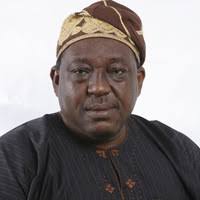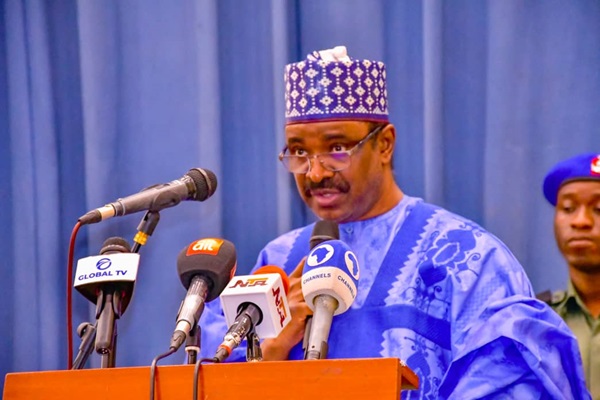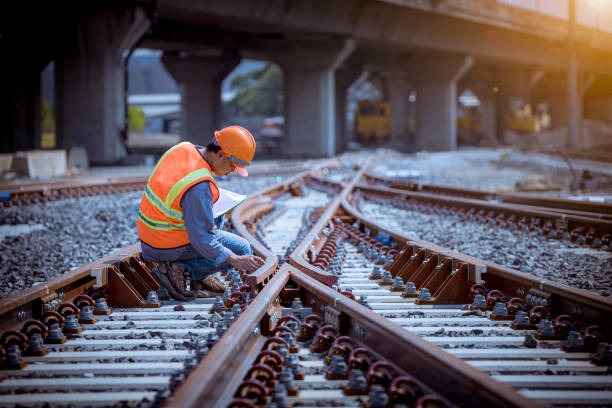
A Policy Document Is Expected To Be Reviewed Every Five Years Or At Most Every 10 years. – Prof. Badejo
- Resources
- April 26, 2025
- No Comment
- 169
Professor Bamidele AbionaBadejo, is a renowned transportation expert and one-time Commissioner for Transportation in Lagos. Badejo, a Professor of Transportation and Logistics.In this interview with Transportation Agenda,he speaks of the need of The Imperative of a National Transport Policy Excerpt!
Why is it imperative to have a master plan or policy in our transportation sector?
Transport policy means the expectation of the government for the transport sector, and that expectation is to allow the government to achieve its political, social, economic, environmental, technological and psychological ambition or goals for its people. So, any transport policy must evolve from all those objectives of the government.
When you look at the political, social and economic and other aspects of transport policy, you now ask, they want the transport policy to be efficient so that it can drive the economy and social life and drive other agenda of government. You want it to be safe in order to extend the life expectancy of the people. If the transport system is safe, it means that life in terms of fatalities and crashes. It will also increase taxation because if people are dying recklessly from road crashes, government would be losing accruable revenue through taxation and other multiplier effects to the economy.
So invariably, we need to establish a policy. It is when that policy is clearly understood and appreciated, you can now draw up a programme which you call a masterplan through which you can achieve the policy objectives of transportation.
In an attempt to achieve that you have to understand the structure of governance in Nigeria in order to achieve a good transport masterplan. You need to understand clearly and unambiguously the structure of governance in Nigeria. Nigeria operates a federal system of government, meaning that we have three tiers of government – the federal, states and the local governments.
The three tiers have their constitutional power which determines the level of what each arm of government would do and how it would be pursued. So not until we have harmony and better understand among the various groups and governance structures involved, we cannot midwife any meaningful and resourceful transport masterplan.
So, when people are talking of transport masterplan, you really need to first of all appreciate the complex relationships that are involved and see how you could perfect these relationships in such a way that they can be approached in order to fashion out a meaningful transport masterplan.
Now what we have is what I call a National Transport Policy and that document has not been finally ratified by the executive and as long as it has not been ratified and signed, it remains a draft copy and as a draft copy, you cannot debate on it solely in order to produce a transport masterplan because you are not sure when the draft copy would become an approved copy of the government. So, if you are using it to do your transport masterplan, you are at best doing a guess work.
Again, if you look at the Exclusive, Recurrent and the residual components of the constitution, there are some aspects of transport that the state or even local government do not have the constitutional capacity or right to delve into such area. As a result, how can you prepare a transport masterplan that does not involve all the component parts of transportation – let’s say air transport, road, waterways and so on. The waterway, for example, is under exclusive, meaning that no state has the capacity to develop a masterplan.
But Lagos State has made bold attempts and it has been challenged even up to the Supreme Court level, and the Supreme Court in its judgement had nullified the role of Lagos State in trying to put such a thing. However, in the case of the railway, the exclusive clause has been removed and taken to the concurrent list, meaning that both states and federal can legislate on rail infrastructure development.
So, if such a kind gesture could be extended to the waterways, then the other states can develop their own water transport infrastructure masterplan in line with the deregulation extended. So, the issue is because of the regulatory, legal aspects surrounding the transport components which has made it very difficult for a masterplan to evolve.
Again, there is serious individual or corporate interest. Some organisations are not ready to relinquish their grip over certain components of the transport sector. As a result, they go all out to ensure that the Transport Policy document is slowed down. Unless there is a radical change of mind especially from the executive arm that enough is enough, we must move forward, let us look at this document and sign off. A policy document is expected to be reviewed every five years or at most every 10 years. If we have submitted a policy document for the endorsement of the government for the past 10, 15 years, it means that the policy is already due for review.
And if the government now said, ‘okay since it is already due for review, why don’t you go and review it and bring it back,’ that is another clog in the wheel of progress. So, we need to understand that we cannot even come out with a comprehensive, all-encompassing policy. We have to continue to grow, just like this democracy is growing. We are patching it, we are managing it, we are evolving over it. So, the transport must also be allowed to move forward so that we shall continue to get it as we advance in our transport development.
We have always talked about intermodal and multimodal transport system and the need to organise the sector which is more like an all-comer affair now. How do you think having a policy or masterplan would help in defining and simplifying this complexity in our transport system?
People don’t know what it means to say something is multimodal. Go and look at Wikipedia. Go and look at a standard transport dictionary.
It will tell you the difference between multimodal and intermodal. As long as you don’t know the difference, people are always mixing up the statement. That I use the Cowry card to take BRT, to take the train, to use the waterway transportation does not mean that you are operating multimodal because any transport that is devoid of time schedule is not multimodal, it is intermodal.
So, the issue of multimodality or inter-modality bothers on the phrase you just want to use in the Nigerian context. But be that as it may, there must be a connection between rail, road and other modes of transportation. If you go to Marina, CMS particularly, you can enter water transport, you can enter train, and you can go by buses. That is an intermodal point because you have a choice.
But if you go to Murtala Mohammed Airport, you only have a choice between air transport and road. They don’t have rail, neither that you have water. So, it is more of intermodal that we are pursuing in this country. So, by the time we get to multimodality, it becomes a seamless movement. It is Lagos state only that is trying to work towards multimodality, but at the initial stage, it is more of intermodality.
That was why I said earlier on, that you may start gradually and graduate to another higher phase and from there, you move forward, upward and upward, until you will now get to the level of the developed countries.
But we want to get to the level of the developed countries without paying the price which they have paid to get there.
“We need to establish a policy. It is when that policy is clearly understood and appreciated, you can now draw up a programme which you call a masterplan through which you can achieve the policy objectives of transportation”.





